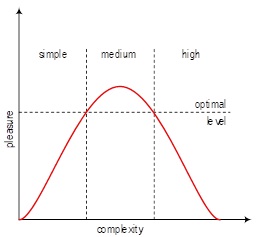
Evaluation of Visual Interfaces in Information Security Management Systems
https://doi.org/10.31854/1813-324X-2024-10-3-116-126
EDN: HZWDEV
Abstract
This article discusses methods for evaluating the effectiveness of information presentation forms in application software, with a focus on developing a comprehensive methodology for assessing interfaces in information security monitoring and management systems. The user interface is a key element that affects the functionality, convenience, and aesthetic appeal of software. These aspects directly influence how users perceive and interact with the software, which is especially important in the context of information security systems to ensure effective and timely responses to incidents and threats. The aim of this study is to develop a comprehensive methodology that allows for the evaluation of the effectiveness of information presentations in security systems. This methodology combines user surveys to obtain an overall quality indicator of the interface with the use of the GOMS method (Goals, Operators, Methods, and Selection Rules) to assess the speed of task completion. The proposed methodology includes two main stages: the first stage involves user surveys to gather subjective assessments and determine an overall quality indicator of the interface; the second stage involves the application of the GOMS method, which provides a quantitative evaluation
of interface efficiency by measuring the time users spend on completing tasks. These two stages complement each other, providing a comprehensive approach to evaluating the user interface. This approach allows for the classification of user interfaces into four quality levels: "excellent", "good", "satisfactory", and "unsatisfactory". The novelty of the study lies in its unique approach that combines both subjective and objective methods of analysis, providing a more accurate and comprehensive evaluation of interface quality in information security systems. The theoretical significance of the work is in the creation of a new methodology for evaluating user interfaces, which can be applied to various information security systems. The practical significance is in the potential use of the results to improve the interaction between operators and information security monitoring and management systems, ultimately enhancing the overall security and efficiency of information systems by improving the quality of operator decision-making. Future research plans include expanding the study to cover additional aspects such as the impact of cognitive loads on operators and adaptive visualization methods that can adjust to individual user characteristics.
About the Author
A. A. ChechulinRussian Federation
References
1. Levshun D., Gaifulina D., Chechulin A., Kotenko I. Problematic Issues of Information Security of Cyber-Physical Systems. Informatics and Automation. 2020;5(19):1050‒1088. (in Russ.) DOI:10.15622/ia.2020.19.5.6. EDN:NIWASO
2. Gan M., Lyu M. Investigation on Visual Communication Design Based on Information Systems. Proceedings of the 2nd International Conference on Data Analytics, Computing and Artificial Intelligence, ICDACAI, 17‒19 October 2023, Zakopane, Poland. IEEE; 2023. p.720‒725. DOI:10.1109/ICDACAI59742.2023.00143
3. Kolomeec M.V., Gonzalez-Granadillo G., Doynikova E.V., Chechulin A.A., Kotenko I.V., Debar H. Choosing Models for Security Metrics Visualization. Proceedings of the 7th International Conference on Mathematical Methods, Models, and Architectures for Computer Network Security, MMM-ACNS 2017, 28‒30 August 2017, Warsaw, Poland. Lecture Notes in Computer Science, vol.10446. Cham: Springer; 2017. p.75‒87. DOI:10.1007/978-3-319-65127-9_7
4. Vostryh A. Method and algorithms of multi-criteria evaluation of graphical user interfaces of software products of the Ministry of emergency situations of Russia. National Security and Strategic Planning. 2022;4(40):57‒64. (in Russ.) DOI:10.37468/2307-1400-2023-2022-4-57-64. EDN:GCHUOC
5. Feng-Gui. Feng-GUI service for assessing the quality of the graphical user interface. URL: http://www.feng-gui.com [Accessed 06.05.2024]
6. Scott B. The Art of UI Prototyping. 2006. URL: https://msdn.microsoft.com/en-us/library/ms993294.aspx [Accessed 06.05.2024]
7. Sauro J. 10 Benchmarks for User Experience Metrics. 2012. URL: https://measuringu.com/ux-benchmarks [Accessed 06.05.2024]
8. Usability.gov. System Usability Scale (SUS). URL: http://www.usability.gov/how-to-and-tools/methods/system-usability-scale.html [Accessed 06.05.2024]
9. Sawyer P., Flanders A., Wixon D. Making a Difference – The Impact of Inspections. Proceedings of the SIGCHI Conference on Human Factors in Computing Systems, 13‒18 April 1996, Vancouver, Canada. New York: ACM Press; 1996. p.376‒382. DOI:10.1145/238386.238579
10. Medlock M.C., Wixon D., Terrano M., Romero R.L., Fulton B. Using the RITE method to improve products; a definition and a case study. URL: https://citeseerx.ist.psu.edu/document?repid=rep1&type=pdf&doi=5340ef8a91900840263a4036b0433a389b
11. b2 [Accessed 06.05.2024]
12. Novikova E., Kotenko I., Fedotov E. Interactive Multi-View Visualization for Fraud Detection in Mobile Money Transfer Services. International Journal of Mobile Computing and Multimedia Communications. 2014;6(4):73‒97. DOI:10.4018/IJMCMC.2014100105
13. Stickel C., Ebner M., Holzinger A. The XAOS Metric – Understanding Visual Complexity as Measure of Usability. Proceedings of the 6th Symposium of the Workgroup Human-Computer Interaction and Usability Engineering, USAB 2010, 4‒5 November 2010, Klagenfurt, Austria. Lecture Notes in Computer Science, vol.6389. Berlin, Heidelberg: Springer; 2009. p.278‒290. DOI:10.1007/978-3-642-16607-5_18
14. Vanderdonckt J. Automated evaluation of graphical user interface metrics. Louvain-la-Neuve: Année académique; 2010‒2011.
15. Card S., Moran T.P., Newell A. The Psychology of Human-Computer Interaction. Hillsdale: Lawrence Erlbaum Associ-ates; 1983. 469 p.
16. Card S.K., Moran T.P., Newell A. The Key Stroke-Level Model for User Performance Time with Interactive Systems. Communications of the ACM. 1980;23(7):396‒410. DOI:10.1145/358886.358895
Review
For citations:
Chechulin A.A. Evaluation of Visual Interfaces in Information Security Management Systems. Proceedings of Telecommunication Universities. 2024;10(3):116-126. (In Russ.) https://doi.org/10.31854/1813-324X-2024-10-3-116-126. EDN: HZWDEV


































